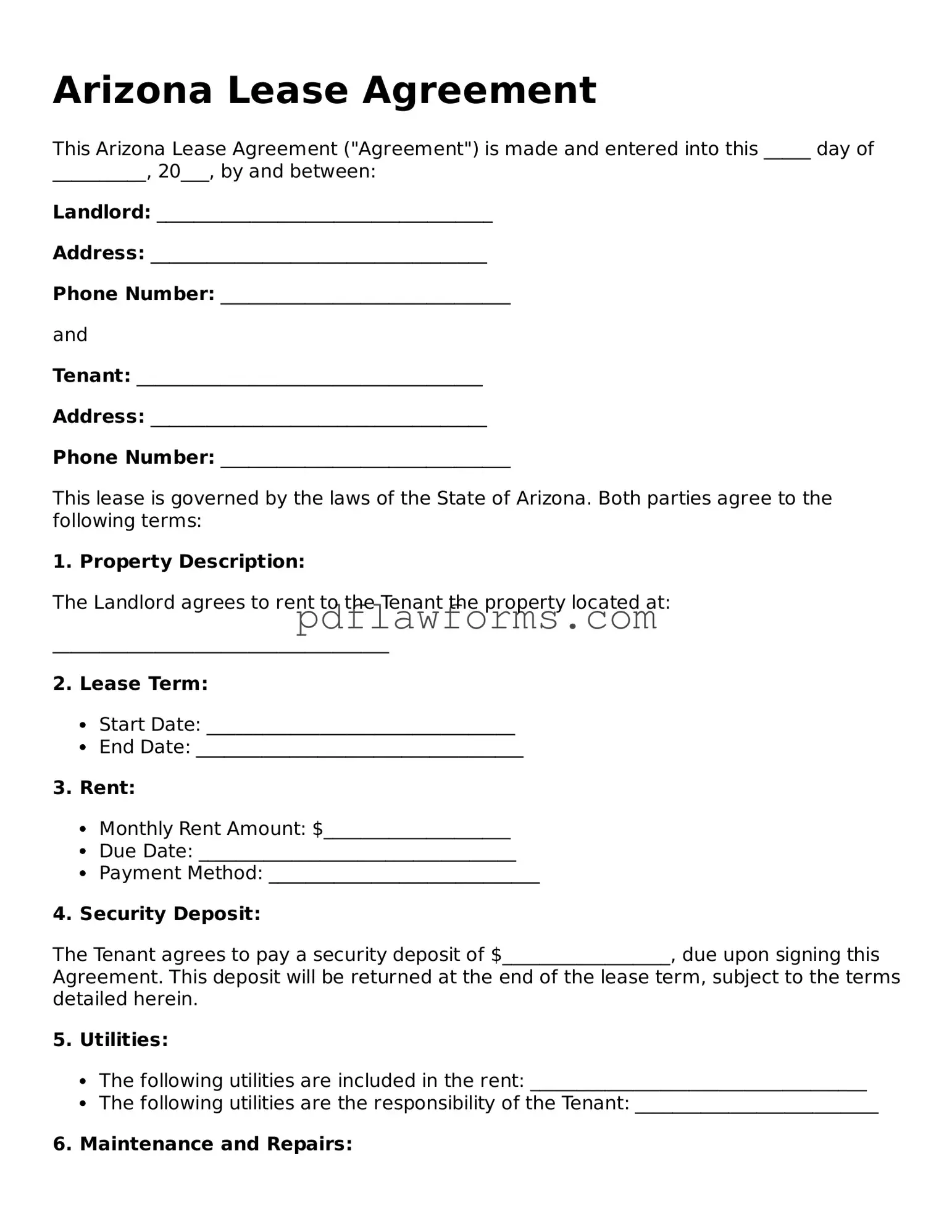Filling out the Arizona Lease Agreement form can seem straightforward, but many people make common mistakes that can lead to complications down the line. One frequent error is not providing accurate personal information. When listing names, addresses, and contact details, it’s crucial to double-check for typos or outdated information. A simple mistake here can cause confusion and hinder communication between landlords and tenants.
Another common oversight is neglecting to specify the rental amount clearly. The lease should state not only the monthly rent but also any additional fees or deposits. If these amounts are vague or missing, it can lead to disputes later. Clarity is key in ensuring both parties understand their financial obligations.
Many individuals also forget to include the lease term. Whether it’s a month-to-month agreement or a fixed-term lease, this detail is essential. Without it, there could be misunderstandings regarding the duration of the rental arrangement. Make sure to define the start and end dates clearly to avoid confusion.
In addition, some people fail to outline the rules regarding pets. If the lease does not specify whether pets are allowed, it can lead to issues if a tenant decides to bring a pet into the property. Clearly stating pet policies can save both parties from potential conflicts in the future.
Another mistake is not addressing maintenance responsibilities. It’s important to clarify who is responsible for repairs and maintenance. If this is left ambiguous, tenants may assume the landlord will handle everything, while landlords might expect tenants to take care of minor issues. Clear communication on this front is essential.
Additionally, many overlook the importance of signatures. Both parties must sign and date the lease for it to be valid. A missing signature can render the agreement unenforceable. Always ensure that all required signatures are present before considering the lease finalized.
Finally, some individuals do not keep copies of the signed lease. It’s vital for both landlords and tenants to have a copy for their records. This ensures that everyone is on the same page and can refer back to the agreement if needed. Keeping a copy can help prevent misunderstandings and provide a reference point for any future discussions.
